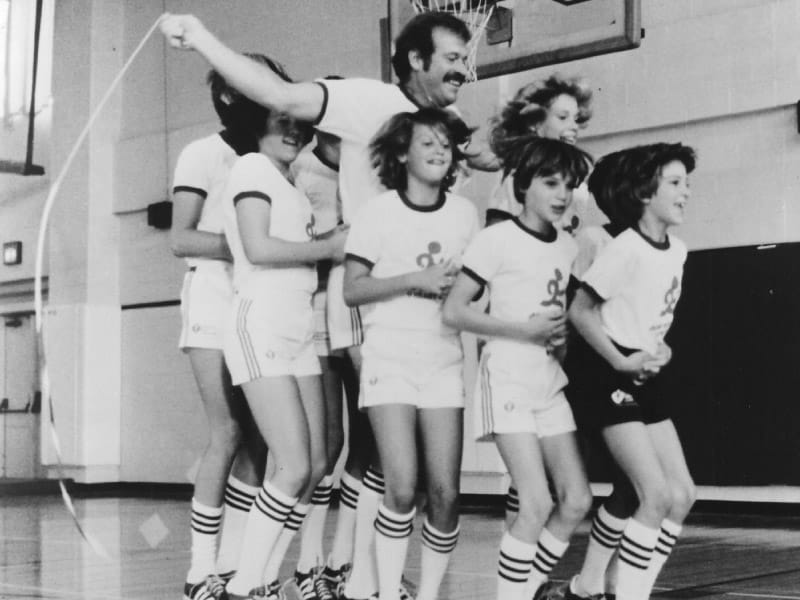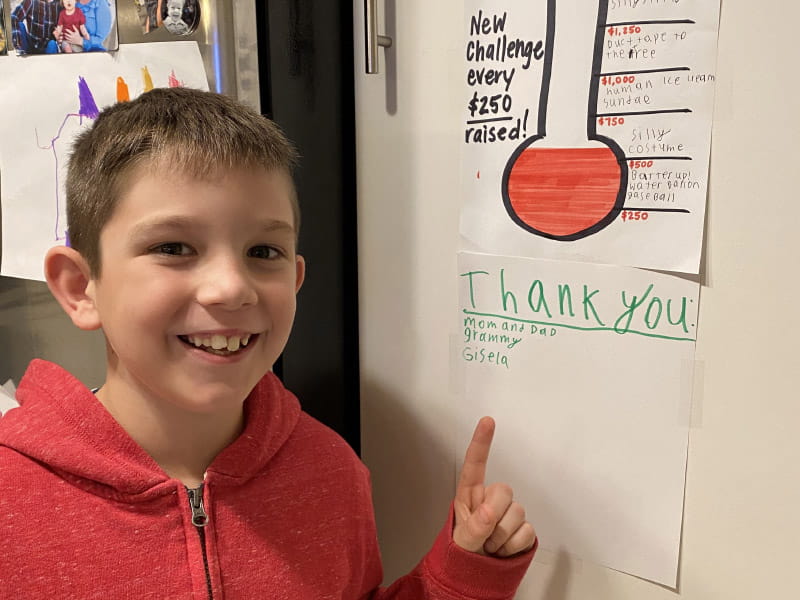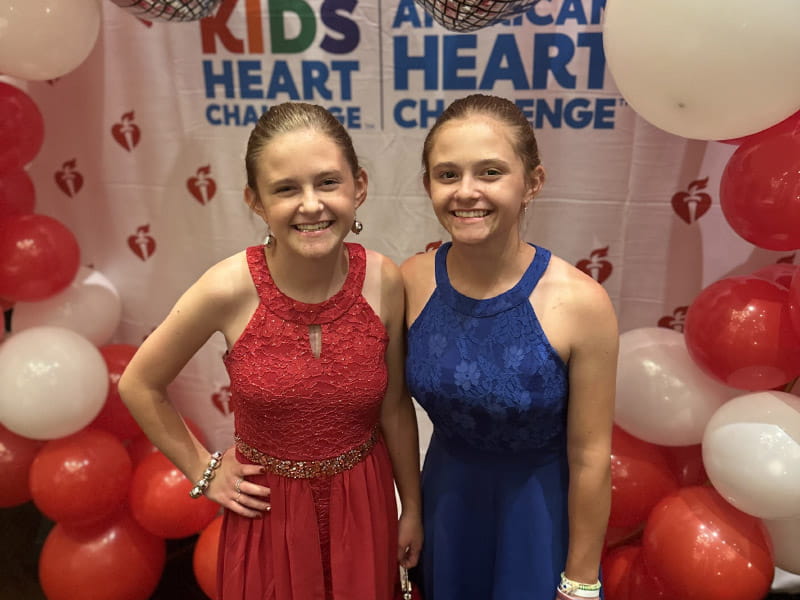Putting the 'fun' in fundraising

In the American Heart Association's fight against heart disease, one not-so-secret weapon is kid power.
Last year, some 1 million students registered for the AHA's Kids Heart Challenge for elementary students or the American Heart Challenge for middle and high school students. The school-based challenges encourage physical activity, raise funds for the AHA's mission and promote awareness of heart health, Hands-Only CPR, mental well-being and more.
"History shows that students become leaders when they learn how to keep their hearts and minds healthy," said Matt Pearce, chair of the AHA's national Superintendent Council. "These challenges give students confidence and the tools to handle the problems of today, which is important now as the world turns faster."
Such AHA kid-focused events have been held for nearly half the organization's 100-year history and have raised a total of $1.8 billion to improve heart health.
"Participating with the AHA is not a single event, it's a journey," said Pearce, whose youngest daughter, 14-year-old Audrey, had a congenital heart defect and heart transplant as an infant. "I don't know if there is anything more important than teaching kids to be of service to others."
A jump start
Jean Barkow, a physical education teacher in Milwaukee, is credited with creating the idea behind such challenges in 1978. She wanted her students at Riverside University High School to combine physical activity with fundraising for the AHA. Her first "Jump-Rope-a-Thon" included 127 students.
During the early years, jump rope and then basketball-focused events were held across the U.S. and sponsored by the AHA and SHAPE America, an organization that supports health and physical education professionals. Today's heart challenges are sponsored solely by the AHA and have been updated to also provide timely and age-appropriate lessons about physical, social and emotional health.
"The program was founded in gyms, but now it incorporates entire schools and local communities," said Paisley Payton, the AHA's national executive for school engagement. "We reimagined how to give students and teachers more flexibility in how they raise funds and how they learn about health and wellness. This makes for a well-rounded program that meets students and teachers where they are."
The AHA provides educators with resources on such topics as teamwork, kindness, anti-vaping, positive thinking, sleep and physical activity. Each school also gets fundraising support and access to interactive technology including a free, user-friendly app and virtual reality field trips from the AHA. In return for their efforts, students can receive thank-you gifts and incentives, earn school volunteer hours and apply for scholarships.
Campuses can customize how to teach the information and how to raise funds. For instance, some schools still offer a jump rope or basketball event. Other schools offer dance, obstacle-course or other physical challenges.
Even as the program has evolved through the years, the goal of improving heart health has stayed at the forefront, and kids who learned heart lessons 20 years ago are still seeing positive effects on their health, Payton said.
"The work we did decades ago is still benefiting us," she said. "The impact we are making with the youth today is leading us to everlasting change."
Fun for all ages
The challenge appeals to students like Mason McElhinney, 11, of Coral Springs, Florida. The sixth-grader raised $6,000 for the AHA when he was in elementary school. He credits part of his success to videos he made that celebrated when he reached donation milestones.
In the videos, he's gotten slimed, been dunked with ice water and worn silly costumes in an effort raise more money. His mom, Casey McElhinney, is an AHA region VP for development and school engagement. She posted the videos on her social media to help him spread the word.
Mason hopes his unique fundraising strategy encourages other students to get involved.
"It just gives me a heartwarming feeling and made me feel really good when I saw the posters for the event of the kids with heart disease at school," he said. "It gave me a little bit of swagger walking by, knowing I'm doing something to help another kid live a better life."

Helping kids succeed
Partnering with the AHA has been a tradition at Hunters Creek Elementary in Houston, said coaches Krissy Scott and Corbin Smith. They have seen notable changes in students who participate by jumping rope in the school's annual Kids Heart Challenge, which has raised almost $350,000 since 2018.
"It's exciting to watch a kid who can't turn a rope the first week be able to know a trick or two by the time we're done with the unit," Smith said. "We can see students building their confidence with something as simple as a jump rope. We tell them this is just a jump rope. But if you can do this, imagine what else you can do in math, in the library, in life."
Seeing that progress has also led to more anticipation for the event.
"The kids are invested," Scott said. "They are asking about it the first week of school. The community and parents get involved. All of the teachers want to be a part of it. It's getting bigger and better every year."
In addition to learning the basics about jumping rope, the teachers also work on lessons about partner skills, teamwork and cooperation.
"It's more than just teaching the skills," Smith said. "We're connecting with kids, families and the community.
"It's also more than fundraising. We have real people affected by heart disease who we can see on the posters hanging in the hallways. That awareness helps kids make a connection and lets them know what they're doing is worthwhile."
Inspiring others
One of those real people is Sophia Ferraro, 13, an AHA youth heart ambassador from Sykesville, Maryland. She was born with tetralogy of Fallot with pulmonary atresia, which is a complex condition with five heart abnormalities. By the time she was 3, she had more than a dozen heart procedures and last year had a third open-heart surgery.
Now, Sophia is a bubbly and eloquent eighth-grader. She loves speaking about her health journey at school assemblies across Maryland promoting both the Kids Heart Challenge and American Heart Challenge.
"I am hopeful more than anything that these challenges help show that there are kids in the world who are dealing with these serious heart conditions," she said. "I don't just teach kids about my special heart, I get to share how they can keep their own hearts healthy."
Speaking to hundreds of students was scary at first.
"But, when I started my speech, I just spoke so freely and it was so easy, and the kids were really listening."
After the challenge assemblies, students are quick to thank her and compliment her for being brave. Sophia has noticed how her message connects with adults as well. At one school, a teacher approached Sophia and shared that she, too, was born with tetralogy of Fallot.
"The teacher was in her 40s or 50s, and she came up to me and said I was a big inspiration and gave me a big hug," Sophia said.
That interaction shows the importance of fundraising so research can help all heart survivors live long, happy lives, she said. Last year, Sophia and her twin sister, Mia, worked more than 50 hours volunteering for the AHA, including assembling and distributing Kids Heart Challenge prizes. Mia, who was born with a healthy heart, also spoke at a student assembly promoting the American Heart Challenge at their middle school. It was a special moment for the sisters.
"I got to hear her side of the story," Sophia said. "It made me feel so good knowing I have someone who supports me and know she will be by my side for the rest of my life."

Sophia said that one day she wants to be a pediatric cardiologist.
"When I see people help me, I want to help others as well. My hope is one day kids like me don't need invasive procedures. I don't want invasive procedures in the future, I just want to be myself."




